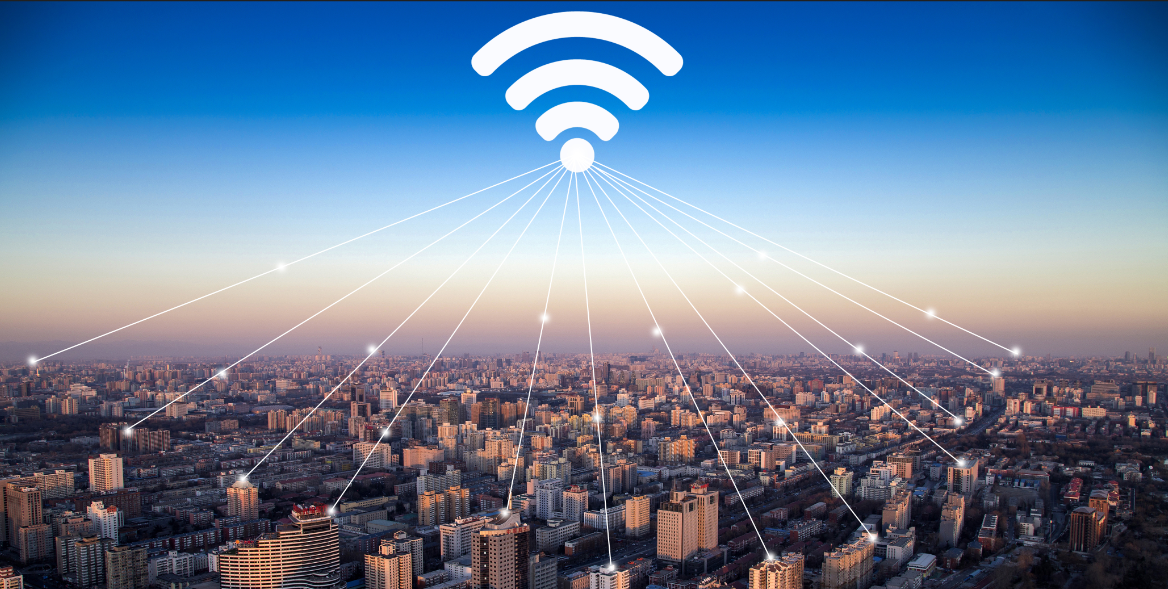What is a computer network hub?

Quick definition: A computer network hub is a layer 1 connection device that retransmits received data to all of its ports. Unlike network switches, computer network hubs do not break collision domains.
Sometimes, studying for IT certification requires learning technology that is rarely seen in the real world; for many IT professionals, computer network hubs fit that description.
Although network hubs are less common in modern network design, they still appear on some exams. Nonetheless, some computer network hubs still exist. Understanding them helps you understand important basic networking topics such as collision domains, Layer 1 connections, and full-duplex vs. half-duplex. With this in mind, let’s take a closer look at computer network hubs!

What is a computer network hub?
A computer network hub is a layer 1 network device that is no longer common in modern networks but still appears occasionally on older systems and network exams. For most modern use cases that may require a network hub, a Layer 2 switch, port mirror, or network tap is usually a better choice.
Hubs are standard on 10Mbps10BASE-T networks, and devices typically connect to computer network hubs using Ethernet cables with RJ45 connectors. However, technically it can use a different connection medium, so an RJ45 connection is not necessary for the device to function as a hub.
One of the most important defining characteristics of a hub is what it doesn't do.
Hubs cannot protect against network collisions because a single hub only provides a single collision domain. The importance of understanding this is probably the most important reason for aspiring networking professionals to learn about computer network hubs.
Computer Network Hubs vs. Network Switches: Why Collision Domains Matter
Network hubs are no longer used as often as network switches can handle most use cases and break up conflict domains.
A collision domain is a segment of the network where data transmissions may collide on the network medium (such as a cable) and require retransmission. These retransmissions can cause congestion and delays on the network.
In the past, cost was a reason to use a hub, but today the cost of unmanaged switches is low enough that it is no longer a factor in the decision.
What are the 3 most common types of computer network hubs?
In the question "What is a network hub?" I only give two of the questions the technically correct label. , there are three common types of computer network hubs you'll see online. They are:
Passive: These hubs do not amplify network signals and retransmit data to all ports.
Active: In addition to retransmitting data to all ports, active network hubs can also act as signal boosters, extending the Ethernet signal.
Smart: Most descriptions of "smart" hubs are really descriptions of other network devices. Generally speaking, a hub is described as a smart hub if it has additional switching, management, or monitoring capabilities.
What are the functions of a computer network hub?
A computer network hub has two primary functions: receiving and transmitting network data through all of its ports. As with powered hubs, computer network hubs can also act as signal boosters. Let's take a closer look at these three features.
Rx: receive data, Tx: send data
The basic functions of a hub in a network are:
- The hub receives data from connected devices
- The hub transmits data to all connected devices
- Since the hub can only send or receive at a time, it operates in half-duplex
All this Tx and Rx stuff can be confusing to aspiring networking professionals, but once you understand what they mean, it's all pretty simple. They are just shorthand for transmit (Tx) and receive (Rx).
In a network, physical connections are typically made through cables and connectors (with wireless connections being a notable exception). These connections typically each wire or "pin" serve one purpose.
In 10BASE-T network communication, the host uses pins 1 and 2 to transmit data and pins 3 and 6 to receive data. So pins 1 and 2 are "Tx" and 3 and 6 are "Rx". Connected devices such as hubs exchange Tx and Rx by using 1 and 2 to receive and 3 and 6 to transmit.
Today, automatic MDI-X detection on network interfaces makes these things less important in practice. But in the days of network hubs, technicians were often scrambling to find crossover cables to handle different port pinouts.
Boost signal
Sometimes, a signal is needed to travel farther. Just like a WiFi extender can boost a wireless signal, a powered network hub can act as a repeater for a wired connection. Active computer network hubs are possible solutions for weak signal strength or extending cables beyond 100 meters (the typical maximum length for twisted pair cable Ethernet).
Are there any modern use cases for network hubs?
Today, computer network hubs have become virtually legacy technology. In a few cases, a hub may help.
For example, some IT professionals purchase a network hub when they want to broadcast traffic to multiple Ethernet ports so that they can easily sniff traffic from other systems using tools like Wireshark. However, a network tap or switch that supports port mirroring may be a better solution for a production environment.
Additionally, since computer network hubs are not full-duplex and do not support modern network speeds, introducing them into the network may create performance issues.
Similarly, a hub may be a quick way to connect devices for troubleshooting or to replace a broken switch, but a standard network switch may be better.
How to Set Up a Computer Network Hub
The setup process for a computer network hub is similar to that for an unmanaged Layer 2 switch. While the specifics may vary by model, the general process is as follows:
Plug the hub into a power source if needed: Hubs (especially powered hubs that need to amplify the signal) usually need to be powered via an AC power cord, wall adapter, or similar power connector.
Connect network devices to network ports: Hubs were very popular in the era of 10BASE-T connections. An RJ45 connector may be used to connect the Ethernet cable.
Connect the device to the uplink port: On modern networks, this step may not be required, but it may be present. Some hubs include an "uplink" port for connecting to another hub. The uplink ports are implemented in a number of different ways, including using pins that are already "crossed over" to avoid the need for crossover cables that switch the transmit (Tx) and receive (Rx) pins.
Check connectivity: At this point, the network devices should be able to communicate. Most hubs have diagnostic LEDs that can help confirm status such as power, conflicts, and port activity.
How to solve network hub problems
Some network hub-related problems are easy to diagnose, while others are a little more complicated. Let’s look at how to troubleshoot different network hub issues.
No power
There is power but no connection
If the hub is powered on but connected devices are not receiving network connections, there may be some issues. To begin troubleshooting, make sure all cables are securely connected. Then, use the following troubleshooting steps to narrow down the problem:
- Confirm that the device has correctly configured network settings
- Check that you are using the correct cable (for example, crossover vs. straight-through cable)
- Check that all devices support the hub's network speed (e.g. 10Mbps half-duplex)
Network performance issues
If adding a network hub causes issues such as latency, jitter, and reduced network throughput, one of the quickest troubleshooting steps may be to add an unmanaged switch. If this method resolves the issue, the root cause may be an increase in conflicts on the network.
In the past, it was wise to examine your network architecture and see if design practices like the 5-4-3 rule would help. Today, however, installing a network switch may be a faster and better way to solve the problem.
Summarize
Whether you're studying for your next certificate, trying to figure out how an old device you found in your wiring closet works, or just interested in strengthening your networking basics, understanding computer network hubs can help.
While this traditional technique may not be at the top of your online modernization shopping list, it can still be useful in some unique situations and is worth learning.